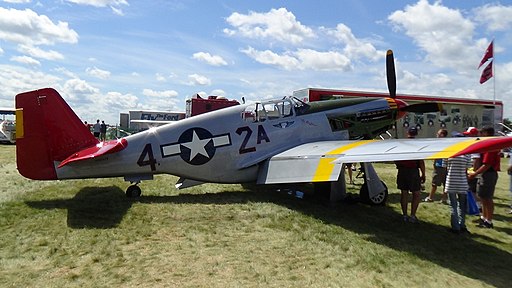American history is filled with stories that capture human resilience, courage, and triumph. One such narrative involves the Tuskegee Airmen, an African-American group who defied prejudice within a predominantly white military establishment during World War II by defying racism while shaping perceptions through perseverance and commitment – their journey has left a permanent mark on American culture and its development.
The Dark Veil of Segregation
The 1930s cast a long and dark shadow over America as racial segregation seeped into the fabric of society, deeply entrenched even within the United States military. African Americans were confronted with pervasive discrimination, with doors to opportunity firmly closed. However, amidst the oppressive backdrop of racial inequality, a flicker of change emerged that would blaze into a transformative movement.
The Birth of a Milestone
President Franklin D. Roosevelt’s administration unveiled the Civilian Pilot Training Program in 1939, aimed at bolstering the nation’s pilot ranks in preparation for potential conflict. Initially marred by racial segregation, this initiative planted hope for aspiring African-American military pilots. The Tuskegee Army Air Field, nestled in Alabama’s heartland, would become the hallowed ground where dreams took flight as these aviators began their journey toward history.
Overcoming Adversity
The Tuskegee Airmen faced many challenges on the ground and in the air. The pervasive discrimination they encountered cast doubts upon their abilities, leaving many skeptical of their potential for success. However, armed with unyielding determination and an unwavering commitment to excellence, they embarked on a rigorous training regimen at the Tuskegee Army Air Field.
From Flight Training to Combat Excellence
The Tuskegee Airmen underwent comprehensive instruction in various facets of aviation, ranging from navigation to combat tactics. Their training extended to airfields across the United States, honing their skills to razor-sharp precision. In 1943, the 99th Pursuit Squadron later rechristened as the 99th Fighter Squadron, became the first African-American squadron deployed overseas. Stationed initially in North Africa and later in Italy, they bravely undertook escort and ground attack missions, showcasing their courage and aerial expertise.
Shattering Stereotypes and Inspiring Change
The Tuskegee Airmen’s combat record spoke volumes, silencing those who doubted their capabilities. Flying countless sorties, they safeguarded bombers from enemy assaults and exhibited exceptional air superiority. The achievements of the Tuskegee Airmen transcended the battlefield, as their heroism and skill defied the entrenched racial prejudices of the era. Their unwavering commitment to excellence shattered stereotypes and reshaped societal perceptions, forcing America to confront its biases.
Legacy of Excellence
The Tuskegee Airmen had an extraordinary influence far beyond military service. Their achievements and determination paved the way for integration into the US Armed Forces and, eventually, the desegregation of its ranks. Their trailblazing journey resonated through future generations, inspiring many African Americans to enter aviation or other fields where racial barriers previously seemed insurmountable. Today, their legacy is a testament to the triumph of the human spirit over obstacles.
For more insights into the P-51 and other important military aircraft, visit Aces In Action. Here, you’ll find a piece of artwork by Craig Tinder titled “In Support of Varsity” that depicts the Tuskegee Airmen of the 332nd Fighter Group. The limited edition canvas print even includes a relic from a fuselage panel of aircraft Construction No. 122-40530 (N51TH).
In Support of Varsity – P-51 Mustang Red Tails Aviation Art Print by Artist Craig Tinder
24 March 1945 – In support of “Operation Varsity,” 1Lt Roscoe Brown of the Tuskegee Airmen, claims his first kill of the war – a German Me 262 piloted by Oberleutnant Franz Kulp. While providing escort duties for the bombers of the 15th Air Force, 53 Mustangs from the 332nd Fighter Group (nicknamed “Red Tails”) were attacked by 25 enemy Me 262 fighters from JG 7 – the first operational jet fighter unit ever assembled. The Tuskegee Airmen lost only 27 bombers on their 312 escort missions to the average of 46 lost.
To purchase or see similar items, visit here.
Commissioned by Museums, Treasured by Collectors





Share:
Did pilots like the P-40?
What is the Cutty Sark famous for (beyond just the whisky)?